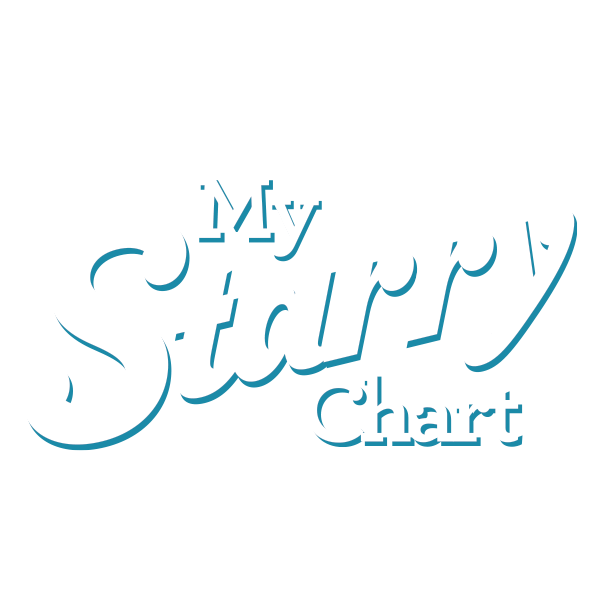
Emotional intelligence
is a vital skill that kids
need to cultivate early in their development.

Can a chore chart help with EQ?
It’s every parent’s dream to hear that their child possesses a high IQ.
We assume that an intellectually gifted kid is bound for future success. Perhaps with the potential to become the next big tech CEO or Hollywood director.
However, kids need more than book smarts to succeed in this ever-changing world.
What is EQ?
Kids need to build their emotional intelligence as well, especially for the time when they will encounter new responsibilities or challenges.
Parents today are unsure of where and how to start building their child’s emotional intelligence.
But there are tools and strategies available to make things easier.
Fortunately, a chore chart that encourages good behaviours and personality traits can serve as a helpful tool for increasing your kids’ emotional intelligence (or EQ).
Here’s a closer look at the science of how a chore chart can be an effective tool for EQ.
EQ: A Look at Emotional Intelligence
Emotional intelligence is defined as “the capacity to be aware of, control, and express one’s emotions”. It also means how we “handle interpersonal relationships judiciously and empathetically.”
You can visualize this definition in everyday scenarios that kids live through. For instance, a teacher might ask the class a question.
A child’s level of emotional intelligence may determine whether they raise their hand or blurt out an answer. Or, whether the child reacts angrily or calmly if the teacher picks one of their classmates, instead of them.
Your child’s level of emotional intelligence may determine whether they express their thoughts peacefully or whether they fire back at you with an irritable tone.
It all plays into the various aspects or characteristics that go into EQ.
Emotional intelligence,
a skill that any child can learn, requires practice and patience to build.
The 5 Aspects of Emotional Intelligence
- Self-Awareness – The ability to accurately recognize emotions, strengths, weaknesses and actions and how they affect others.
- Self-regulation – The ability to manage one’s emotions and impulses, and acting appropriately to the current situation.
- Empathy – The ability to identify and understand others’ emotions (putting oneself in another person’s shoes).
- Motivation – The ability to find joy in what one does and working towards achieving one’s goals without seeking external rewards alone (ie. money, status).
- Social skill – The ability to manage relationships in a way that fosters positive interactions among a group of people (ie. classmates, company).
Benefits of High Emotional Intelligence
- Adaptability – Kids with high EQ adapt more easily to change, especially when that change is stressful.
- Leadership – Children with well-developed emotional intelligence have a better understanding of what makes people tick, make more empathic and influential leaders.
- Resilience – When kids increase their emotional intelligence, they’re more likely to have thicker skin and display mental toughness in the face of adversity.
- Cooperation – Children who increase their emotional intelligence are more likely to collaborate peacefully and effectively with their peers.
Breaking Down EQ Further
The kids who develop these four attributes above are more likely to reach their potential at school, in relationships, in extracurricular activities and eventually, the workplace.
But the question remains for a skeptical parent or teacher: how does a colourful board and cutesy stickers build your child’s emotional IQ?
How to Use a Chore Chart to Develop EQ in Kids
A chore chart comes with stickers that are labelled with tasks for kids to complete.
Some of these activities are basic chores such as feeding a pet or taking out the trash.
But other stickers may list a “task” that is actually a quality.
For example, the sticker may say something along the lines of “Help Someone”.
That sticker promotes a spirit of sharing or offering assistance to someone who may need it. It also takes a little more critical thought for your child to achieve.
My Starry Chart’s “Emotional IQ” Stickers
With our very own My Starry Chart, you can find several activity stickers of the sort.
We’re not talking about typical chores (ie. clean your room, make our bed) but rather, more general behaviours that your kids can physically carry out.
This includes:
- Be “Kind” – You’ll find stickers bearing the labels “Be Kind”, “Be Polite”, “Be Truthful” “Be a Good Listener” and “Be Patient”.
- For example, they can help you bake dessert for a friend or relative (Be Kind). Or, you can encourage them to speak openly with you about their fears, goals or concerns (Be Truthful).
- Help Someone Out – My Starry Chart boards come with stickers such as “Help My Mom/Dad/Sister/Brother”.
- For example, if your 11-year-old is a math wiz, they can help their 8-year-old brother or sister with their math homework; especially if arithmetic is not their strong suit.
- Share – Another sticker that comes with our board is “Share With Others”.
- Be prepared to brainstorm! Keep in mind that sharing can take many forms. Kids can share their time by volunteering at a community event. Or, by donating some of their allowances to a reputable charity.
How a Chore Chart Can Build the 5 Traits of Emotional Intelligence
We mentioned the five aspects of emotional intelligence earlier.
Naturally, when kids complete the activities suggested on a chore chart, they will work their emotional IQ muscles and build these five skills.
Here’s how:
- Empathy – To help someone or share something, kids need to first think about the circumstances or emotional state of another person.
- The mere act of your child thinking about what they can do to brighten someone else’s day is a form of empathy.
- Self-Awareness – Kids can be helpful in different ways – no child is the same.
- Before your son or daughter chooses what they can do to help someone out, they have to know what it is they can offer to that person. The act of doing this repeatedly builds their self-awareness skills.
- Social skills – When kids share with others or offer help, they’re more likely to listen to others and speak appropriately.
- These are two vital factors for strong communication skills. This will naturally make them more approachable in the eyes of their friends and family members.
- Self-regulation – As kids become more emotionally intelligent, they will begin to realize that sometimes the best way to be helpful or kind is to refrain from acting a certain way or saying a certain thing.
- Remembering chore chart phrases such as “be kind” or “be patient” may motivate them to keep their emotions in check.
- Motivation – The most difficult part of using a chore chart to develop emotional intelligence is for building intrinsic motivation.
- Your child might not have the intrinsic desire to help others right out the gate. This is especially true if they are younger. What will likely happen, though, is that as they help and share with others
- Over time, this will create a feedback loop that will encourage them to keep on being a “good citizen” without the need for recognition or rewards.
Emotional Intelligence Comes From Action
It’s true that kids develop unique personalities and mature at different rates. But emotional intelligence, a skill that any child can learn, requires practice and patience to build. It’s not innate. It takes practice, commitment and patience; from both the child and the parent alike!
This is how My Starry Chart can help.
A chore chart can work as a springboard, allowing you and your kids to brainstorm activities they can participate in to build their EQ.
Keep in mind that at first, your kids may look forward to praise and rewards. But as key brain regions develop (with age), their motivation for giving will become more intrinsic. Your son or daughter will eventually take more initiative to help others on their own! And that’s the philosophy and goal of My Starry Chart as a whole: to encourage your child’s innate desire to be kind, helpful and emotionally mature beyond their own physical age.
